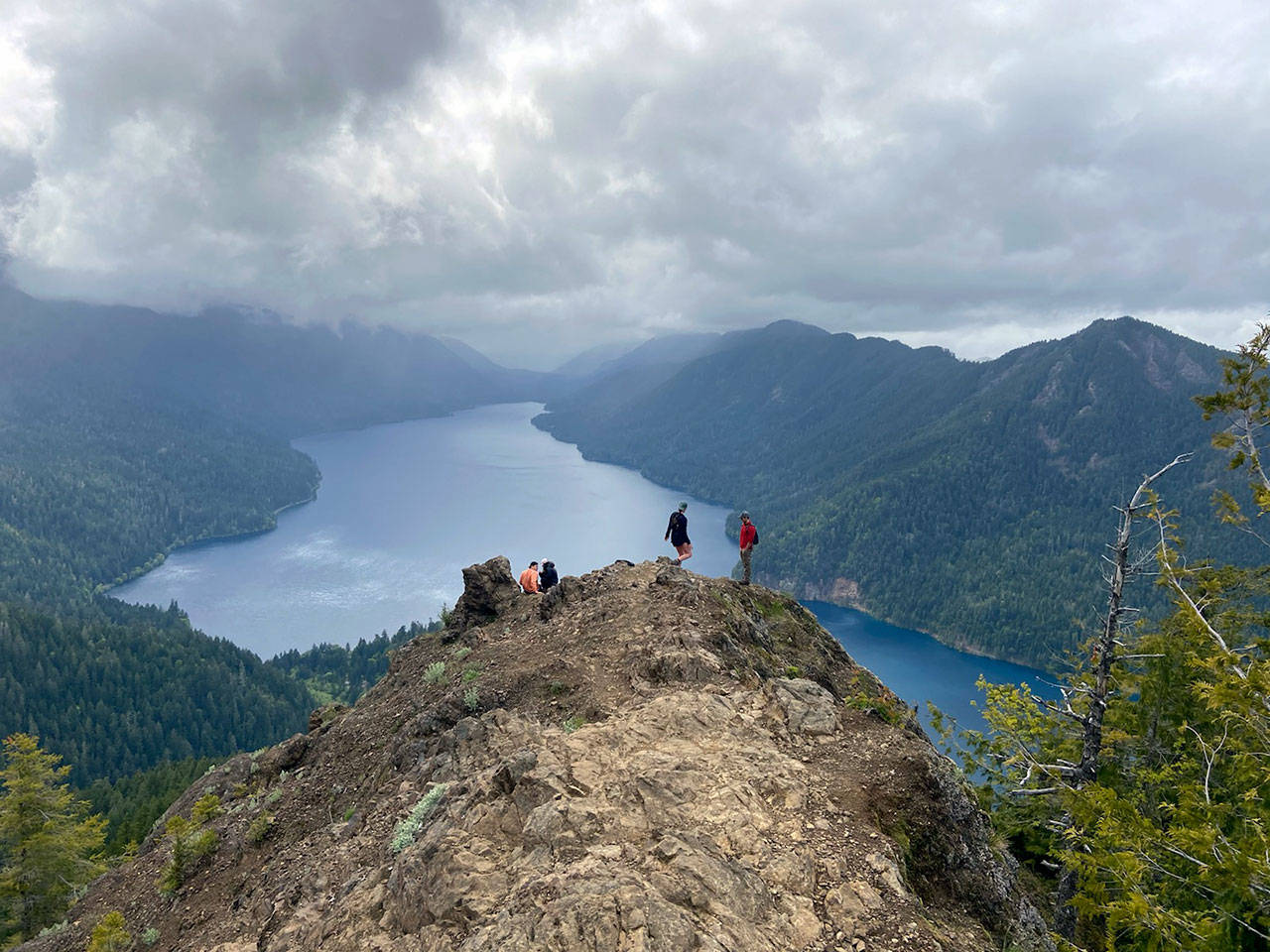OLYMPIC NATIONAL PARK — A bird’s-eye view of Lake Crescent awaits on the craggy flanks of Mount Storm King.
A prominent overlook more than 2,000 feet above the crystal-clear water offers a panoramic perspective of this glacially-carved jewel of the North Olympic Peninsula.
Expect to have some company on this classic Northwest hike as Storm King remains popular with locals and visitors alike.
After a two-month closure for COVID-19 precautions, Olympic National Park reopened portions of its million-acre wilderness May 15, including the Lake Crescent area.
West End beaches, the Hoh River and Hurricane Ridge remain closed.
At least three dozen hikers practiced social distancing on the Marymere Falls/Storm King trail last Friday afternoon. None were in groups of more than five, and all made room to pass safely.
Public health officials say hiking is appropriate amid the COVID-19 pandemic as long as you abide by physical-distancing restrictions.
Dr. Anthony Fauci, the nation’s top infectious disease expert, said he planned to go hiking on Memorial Day weekend, too, so we were in good company.
The steep, unrelenting route up Mount Storm King leaves the Marymere Falls nature trail about a half-mile from the parking lot. No special permits are required to park. Dogs are not allowed on the trail.
The Storm King trail is covered by old growth canopy until you gain a ridgeline — and the first views of Lake Crescent — at about 2,000 feet of elevation.
At 2,400 feet, you’ll see a sign bolted to a tree that says “End of maintained trail.”
You could turn around here, but you’d miss all the fun.
A series of fixed ropes helps hikers keep their footing on a final ascent to a 2,675-foot crag of bedrock that juts out over the ridge.
The basalt outcrop is an ideal picnic spot and generally considered to be the top of the Storm King trail.
Higher up, the ridge traverse becomes a somewhat sketchy rock scramble with more fixed ropes and a heavy chain. The true summit of Mount Storm King sits further to the east at 4,538 feet.
According to geologists, parts of Mount Storm King’s north face broke free in a series of landslides about 8,000 years ago.
The landslides, which originated from both sides of the valley, separated Lake Crescent from Lake Sutherland, causing the former to rise about 80 feet and moving its outflow to the Lyre River, Pacific Northwest geologist Marli Miller said in the “Roadside Geology of Washington, Second Edition.”
An Indian legend tells a similar story of the creation of Lake Crescent.
“There was much fighting between the Klallam and Quileute tribes along a small river that flowed through the present site of Lake Crescent,” according to the legend as told in an Olympic National Park brochure.
“The disagreements escalated into a great battle that lasted three days.
“The mountain spirit of the area became very upset at the foolish fighting. He hurled a gigantic boulder down at them, killing all of the warriors.
“The boulder was so big that it dammed the river and the water backed up, forming Lake Crescent.
“For many years, tribal members did not visit the area where their relatives were killed.”
Mount Storm King
■ Elevation gain: 2,075 feet.
■ Top elevation: 2,675 feet at overlook.
■ Round trip distance: 5.5 miles.
■ Directions: From U.S. Highway 101 at Lake Crescent, follow signs to Storm King Ranger Station/Marymere Falls trailhead.
________
Reporter Rob Ollikainen can be reached at rollikainen@peninsuladailynews.com.

